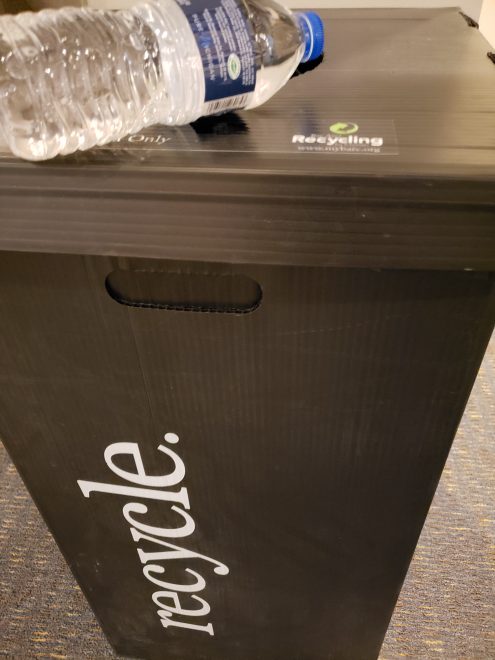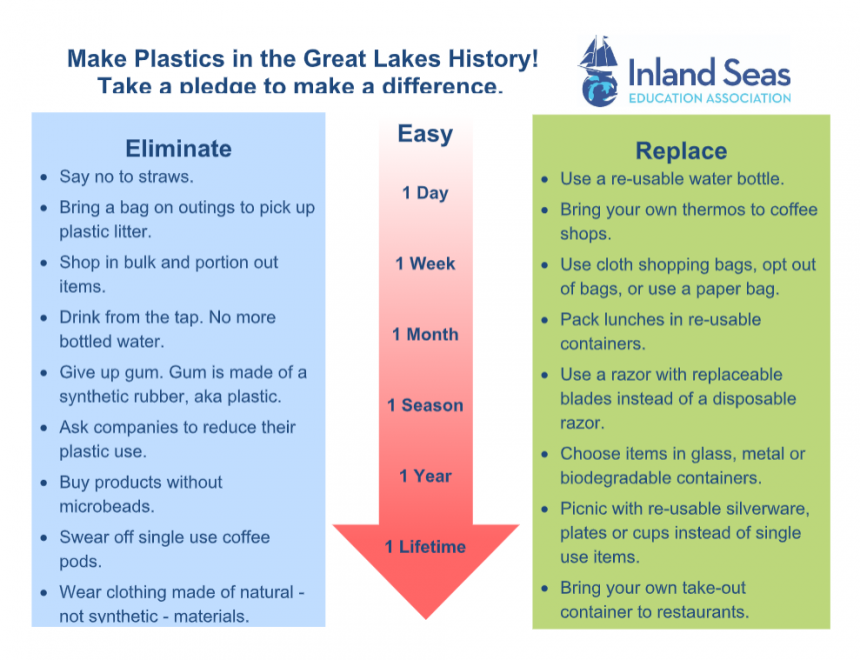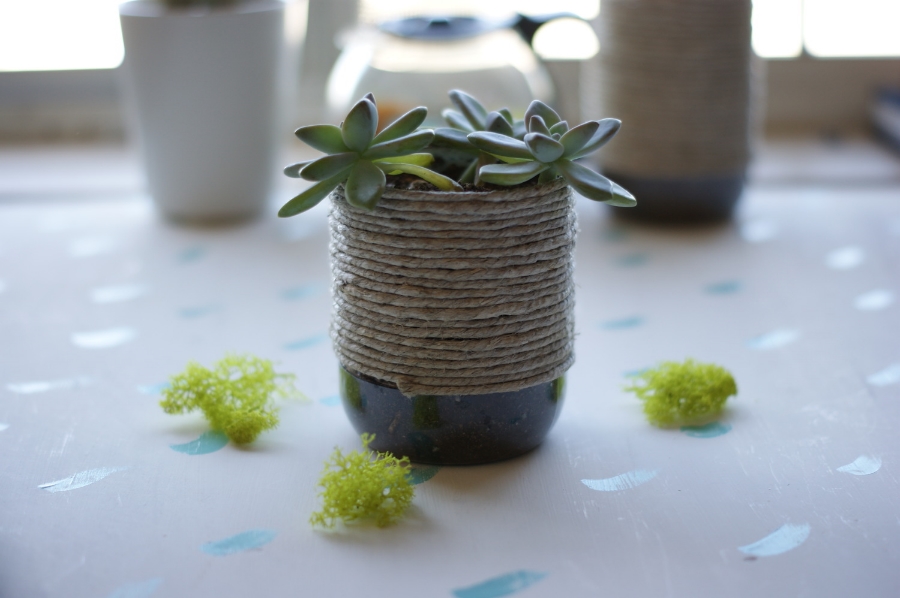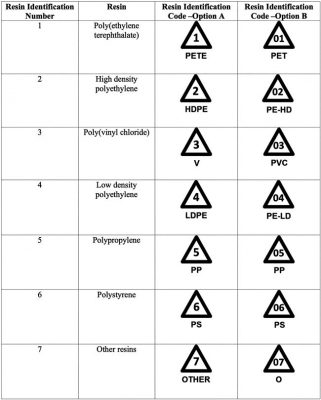By Rachel Ratliff
As a society, we are not oblivious to the consequences of our consumerist culture. At this point, if someone has not seen a photo of a deceased animal stuffed with plastic it is likely they are not using the internet, like ever. However, despite knowing the consequences of our ever-growing waste problem, we are not slowing down in creating it. Quite often when this topic is brought up in conversation, people will work in a sentence along the lines of, “Well I recycle.” Have we forgotten the three R’s? Reduce, reuse, recycle. These are listed in order of importance with recycling as a last resort. In many ways, recycling something and just throwing it away is the same. Once a used item is tossed into the appropriate bin it is out of your sight and becomes someone else’s problem. In this series we will focus on what happens when we recycle different materials and how we can be less reliant on the process.
Plastics

When we drop a plastic bottle in the blue recycling bin we feel good about our choices, like we have moved in a “greener” direction. What happens after? If you have no idea or haven’t even thought of it, don’t beat yourself up. The average consumer doesn’t really know. Perhaps you have heard of playground benches being made from milk jugs (1). Maybe you have tried on one of those plastic fiber sweaters hoping to fall in love… the color was great but let’s be honest those things are so itchy (and they cause their own environmental problems that we won’t get into here). Though there are many potential recycled products, recycling a plastic item does not guarantee it will have a second life. Here is what we do know. Since the 1950’s global plastic production has increased from two metric tons (4,409 pounds) to 380 metric tons (837,757 pounds) (2). Despite the recent popularity and integration of recycling into our culture, only 9% of our plastic waste is properly recycled and 12% is incinerated. The other 79%…exists in landfills, in ocean gyres, in sediments. Our shoreline views are soiled with old bottle caps and other debris. Our system deserves better. We deserve better!
International Complications
Did you know that we typically ship our recycling waste overseas? Yes, we sell our waste like it is a product! Until recently China has been the primary purchaser of discarded plastic waste, as much as 45% (2, 3). Due to a number of reasons, China has drawn a line in the sand, no more waste imports. For the first time, we are being left alone to deal with our own garbage and we are not handling it well. Managing our own waste is more expensive than shipping it overseas; each town or city is coping with the price hike differently. Some have started hopeful education programs encouraging citizens to generate less waste. Other areas have suspended or even terminated their recycling programs entirely, moving the plastic waste directly into the landfill. Worst of all, some municipalities have resorted to incinerating their plastic waste. In 2015, the greenhouse gases emitted from American plastic incineration was 5.9 million tons which equates to 1.26 million passenger vehicles driven in a year (4).
Preventing a Mess
With so much of our plastic waste at risk of a one-way trip to the landfill already, it is imperative that we are keeping waste sorted and clean. Food waste has no place in a recycling stream. In fact, it is considered a serious contaminant. When a batch of recycling material is gummed up with food contaminants, the whole bundle is worthless and promptly lost in a landfill (5). Primary offenders include the peanut butter at the bottom of the jar, greasy pizza boxes, and yogurt residue in the container. Is it a pain to scrape it out? Yes. Will you get food stuff on your hands? Probably. Is it worth it to keep recyclable materials out of a landfill? Absolutely! We hope you agree.
Another kind of contamination is the mixing of materials. Plastics are specifically labeled with numbers, each number delineating a kind of plastic polymer used to make the container.
Some of these numbers are recyclable and others are not. What recycling companies will accept varies and it is important to know your local provider’s regulations. For example, number 7s and number 2s do not mix. Enough 7 plastics in a waste bale could land the entire kit and caboodle in a garbage truck rather than the recycling facility. The most important recycling motto is, “When in doubt, throw it out.”
Being an effective recycler is not a passive act. It is important to know your local facility’s regulations. Most organizations even offer tours of their facilities so you could get a close-up look at the recycling process.
Cutting the Nylon Cord
Let’s revisit those other R’s: reduce and reuse. Unnecessary plastic is ubiquitous in our consumer choices which means the chances to reduce our use are just as endless! Are you thirsty? Use a reusable bottle. Is it lunchtime? Bust out that lunchbox with your washable food containers and pouches. Gone are the days of boring polyethylene bottles and bags. Reducing your plastic waste can be a form of self expression! Inland Seas Education Association has this neat graphic detailing some of the ways you can reduce plastic in your everyday life.

Cost is often an obstacle when families are looking to be more sustainable and many of the long-term replacement options come with a price tag. This hurdle is unavoidable; do not feel like you can solve the problem overnight. Integrating these changes into a household takes time and practice. If you are committed to bringing your own containers for leftovers, do not get discouraged if you forget once in a while! We all goof up on occasion. What matters is that we are making an effort. We do not need a few people perfectly eliminating disposable plastic from their lives. Our world will benefit greater from a million people fiercely trying to quit their plastic habits.
Gifts Galore
In some personal (and crafty) opinions, reusing is the best of the three R’s! Truly, the options for reusing our plastic are infinite. Craft projects abound! The internet is your oyster, my friends. With the holidays fast approaching, we all have gift-giving on our minds (though let’s be real, any season can be gift-giving season if you have a material as bottomless as plastic waste). Pinterest is bursting with ideas for your unwanted plastic. Below is a useful way to reuse your plastic:
Plastic Planters
Plastic bottles made from Type 2 plastic, also known as High Density Polyethylene, are quite sturdy. They’re perfect for housing a small houseplant or succulent. They are also a smooth blank canvas just begging to be customized.
Here’s what you need:
- Bottles (duh)
- Sandpaper
- Boxcutter
- Soil
- Seeds or plant
- Paints & brushes, pom poms, macaroni noodles, whatever you want to decorate with!
Step 1: Using the boxcutter, cut off one end of your bottle (if you do not feel confident doing this by yourself please find an adult to help).
Step 2: Scrub the sandpaper all over the outside of the bottle where you will be decorating. This helps your paints and glue stick to the plastic.
Step 3: Decorate! Go nuts! I think I’m going to paint a water scene with a beautiful ship sailing on the bay….
Step 4: Add your soil and plant. Water accordingly. For some of us, this might be harder than crafting the pot itself.
Here are a couple of cool photos of bottles being upcycled into plant pots:

(https://onelittleproject.com/plastic-bottle-planters)

(https://www.acharmingproject.com/blog/2015/3/5/ixvijz83srk6hvk1ogyf9e9apnuhpi)
If we are hoping to solve our plastic waste problem, the first and most essential step is reducing the use of “disposable” plastic in our everyday lives. Reusing our plastic for crafts and gift-giving is not only easier on the planet, but easier on our wallets too. Recycling is a crucial part of the waste reduction process, but we cannot be lazy about it. Contact your local recycling provider to learn what types of plastics are allowed and how to best clean them before disposal. There is no quick-fix for our waste crisis. Long-term change only comes as a result of hard work, lifestyle change, and conversation. Wanting to change is the first step! If you create any of the above crafts, send us a photo to be featured on the Inland Seas Instagram account.
References:
- “What Plastics Can Become.” Recycle Your Plastics, www.recycleandrecoverplastics.org/consumers/kids-recycling/plastics-can-become/.
- Gross, M. 2017. Our planet wrapped in plastic. Current biology. 27(16): 785-788.
- Collins, Charlotte. “The Global Environmental Recycling Crisis: What Options Exist for Plastic Waste?” A Climate Institute Publication, Aug. 2019, climate.org/wp-content/uploads/2019/08/The-Global-Environmental-Recycling-Crisis.pdf.
- “Plastic & Climate: The Hidden Costs of a Plastic Planet.” Ciel.org, Center for International Environmental Law, May 2019, http://www.ciel.org/plasticandclimate.
- Rachelson, David. “What is Recycling Contamination, and Why Does it Matter?” Rubicon, December 4, 2017, https://www.rubiconglobal.com/blog/recycling-contamination/.
This blog has been written by Rachel Ratliff, an educator for Inland Seas Education Association. Rachel obtained her degree in natural resource management with a minor in biology from Grand Valley State University. She first began her journey with ISEA as an education intern in the summer of 2018 and has a passion for experiential education as well as public outreach and communication.
Inland Seas Education Association (ISEA) is a 501(c)(3) nonprofit organization whose mission is to inspire Great Lakes curiosity, stewardship and passion. Through hands-on, experiential learning activities, people of all ages gain an appreciation for and personal connection to our lakes, leading to a desire to care for and protect them. For more information about our Schoolship programs, data, or public sails, please visit www.schoolship.org.
